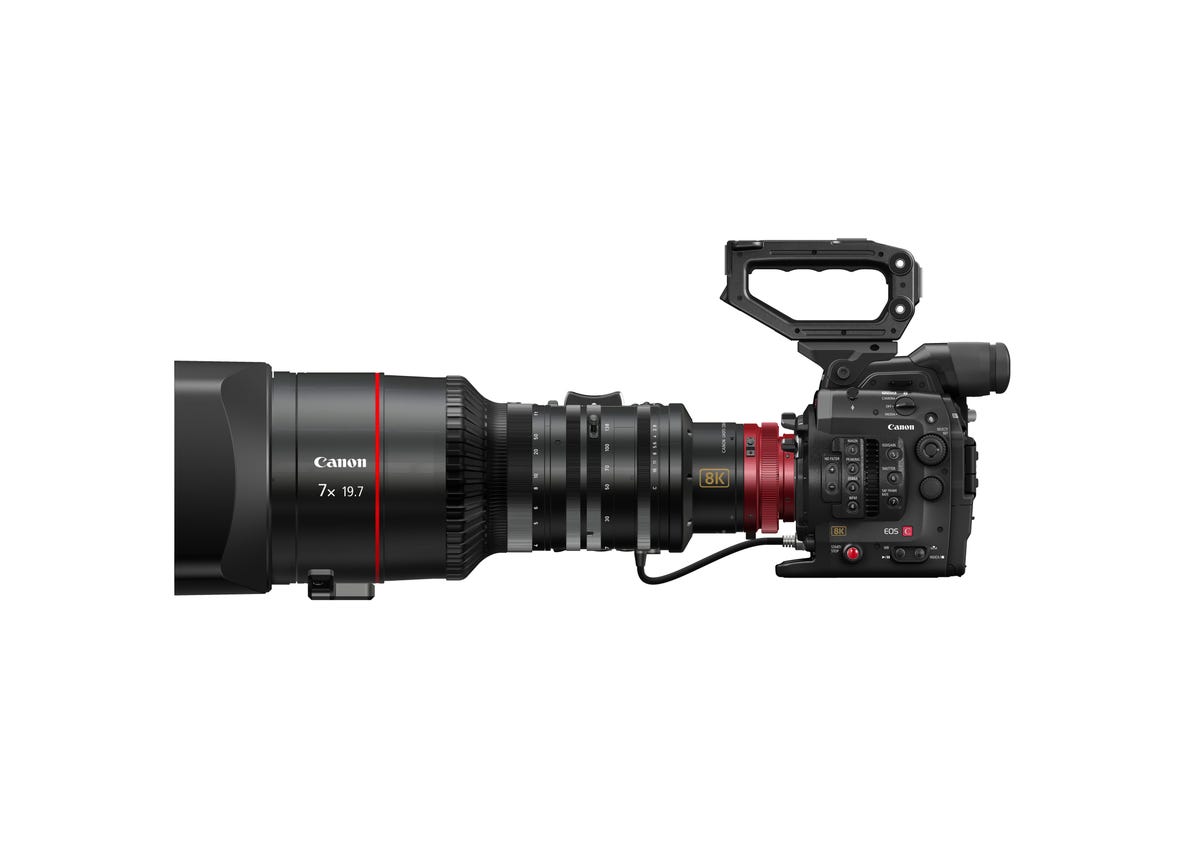 Enlarge Image
Enlarge ImageCanon
Canon wants a whole new level of detail for photos and videos.
In a Tuesday announcement, the Japanese camera maker said it’s building an SLR camera that can capture 120-megapixel images — more than double what’s possible with its new 50-megapixel EOS 5DS . And for video fans, it’s working on a camera that can capture “8K” video with about 16 times as many pixels as today’s conventional video.
It’s not clear when the new products will come to market, but they are real products — unlike yesterday’s announcement of Canon’s 250-megapixel image sensor, for which the company is merely evaluating possible uses.
In principle, more pixels in photos and videos means more detail for a richer, more realistic look. In practice, though, super high resolution imaging can be limited by how sharply human eyes can perceive detail and how well camera lenses can perform.
So why bother? For photographers, a 120-megapixel camera is good for tasks such as art reproduction, high-end product photography that requires maximum detail and landscape shots that are printed as big posters. For video, 8K resolution is overkill for ordinary TV but not necessarily for moviemakers making the transition from film: more pixels can benefit big-screen projection systems.
And with abundant pixels, a director could decide after a scene was shot just how much to zoom in to a particular part of the scene, said InfoTrends analyst Ed Lee. Or during a baseball game, “where there is a close play at first base, with more resolution, the instant replay umpires could really zoom in and see the relationship of the ball to the foot on the bag,” he said.


Canon
With this week’s announcements, Canon gets some boasting rights for advancing imaging technology spectacularly far beyond its first digital camera, the 3.1-megapixel D30 released in 2000. But for the company to truly make a difference to consumers, it’ll also have to show its ability to compete better with image-sensor rivals like Sony that not only beat Canon to higher resolutions in recent years but also still lead Canon in other measures of image quality. Those other measures, like a broader dynamic range between light and dark areas of a photo, arguably are becoming more important since most folks don’t need 20 megapixels, much less 120.
Capturing texture, not just color
The 120-megapixel camera is sharp enough that photographers will be able “to recreate the three-dimensional texture, feel and presence of subjects,” Canon said.
That’s possible because high resolution can capture very fine detail. But Canon has developed a separate process that uses multiple cameras to record the fine three-dimensional details of surfaces such as fabric and oil paintings and capture optical properties such as transparency or glossy reflections. It’s also developed three-dimensional ink printing that, once the ink is cured by exposure to ultraviolet light, reproduces that surface texture. That means that with your own hands, you’ll be able feel the difference between Van Gogh’s broad brush strokes and Seurat’s pointillist dots without damaging the original paintings.
The Canon videocamera’s sensor has a resolution of 8,192×4,320 pixels — thus the term “8K” — for 35.4 megapixels on a 26.2 by 13.8mm Super 35mm-format sensor. That compares to 1,920×1,080 for conventional high-definition video today and 3,840×2,160 for the “4K” Ultra HD that the TV industry is pushing right now.

 Enlarge Image
Enlarge ImageCanon
Canon clearly cares about dynamic range as well as resolution. Its 8K camera will have a 13-stop dynamic range — better than the current 5DS products but still behind Red’s Epic Dragon at 14.8 stops (or 16.5 stops according to the company) and 14 stops for Arri’s Alexa. (Each stop corresponds to a doubling of the amount of light.)
The upcoming Canon 8K model will max out at 60 frames per second. Most video is shown between 24 and 30 frames per second.
Just editing video captured can be a challenge since 4K monitors are expensive and relatively rare. Canon said it will release a high-quality 8K video monitor for the task, though.
Canon remains a powerful force in the camera industry, though it has no presence in the smartphone market where most people take most of their shots today. These upcoming products, however, are aimed at big-budgeted enthusiasts and professionals who are serious about their craft. Anyone who buys a poster of a painting at the museum or goes to the movies should be the ultimate beneficiaries.




